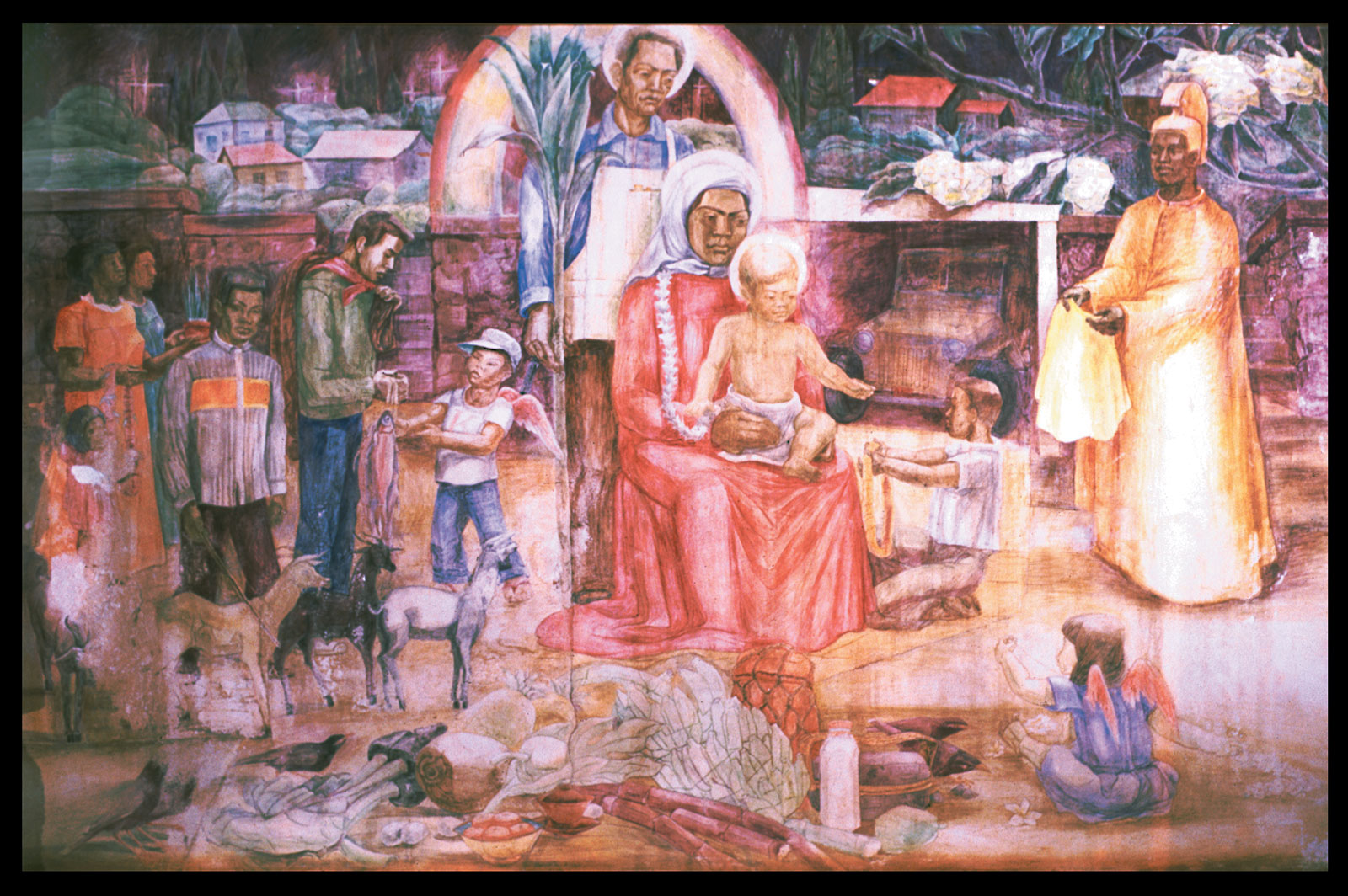“Mele Kalikimaka” (“Merry Christmas”) is a Hawaiian-themed song written in 1949 by R. Alex Anderson. Born in Honolulu in 1894, Anderson, a Caucasian, became one of the most popular composers in the hapa haole (“half-white”) genre, which describes music with a Hawaiian tune, styling, and/or subject matter but lyrics that are mostly or entirely in English. Over his long career Anderson composed nearly two hundred songs, several of which became popular standards, and he was posthumously inducted into the Hawaiian Music Hall of Fame in 1998. “His ear for Hawaiian music’s special sound and rhythm was exceptional,” the HMHF wrote, “and he was regarded as a successor to Charles E. King in maintaining the melodic and lyrical qualities which are Hawaii’s musical identity.”
In a 1994 interview, shot just a year before his death at age 100, Anderson said he was inspired to write “Mele Kalikimaka” when a coworker lamented to him one day that there were no original Hawaiian Christmas songs; all that existed were Hawaiian translations of carols from other countries.
So he got to writing:
Jingle bells upon a steel guitar
Through the palms we see the same bright star“Mele Kalikimaka” is the thing to say
On a bright Hawaiian Christmas Day
That’s the island greeting that we send to you
From the land where palm trees sway
Here we know that Christmas will be green and bright
The sun to shine by day and all the stars at night
“Mele Kalikimaka” is Hawaii’s way
To say “Merry Christmas” to you
A year later, in 1950, the song appeared on the flip side of Bing Crosby’s White Christmas album, featuring the Andrews Sisters.
Since then it has been covered by a range of artists, including the Monkees, Bette Midler, Jimmy Buffett, Train, Teresa Carpio, Ingrid Michaelson, She & Him, the Puppini Sisters, the Petersens, Leslie Odom Jr., and others. I especially like the playful version performed by married couple Gianni Nicassio and Sarah Blackwood of the Canadian indie-pop band Walk Off the Earth. They do vocals, ukulele, guitar, djembe, chimes, cymbals, and kazoo! The song can be purchased here.
In the same decade that Bing Crosby catapulted Anderson’s Hawaiian Christmas song to nationwide popularity, painter Juliette May Fraser carried out a mural commission for the newly built St. Catherine’s Catholic Church in Kapa‘a, Kauai, commonly referred to as Hawaiian Nativity. Covering the makai (sea-facing) wall, it shows Hawaiians of various ethnicities presenting ho‘okupu (gifts) to the newborn Christ child, who sits on his mother’s lap.

Fraser is of Hawaiian, Chinese, Filipino, Portuguese, and Irish ancestry, and this multiculturalism is reflected in her Nativity. She wanted the painting to be modern and “international in flavor,” she said, reflecting Hawaii’s ethnic diversity.
Instead of a donkey, a jeep has brought the holy couple, who are portrayed as Native Hawaiian, to the place of their son’s birth. The license plate reads, “4-20-58,” the date on which St. Catherine’s was dedicated. Mary wears a muumuu and lei, while Joseph stands behind her with a sugar cane stalk. “The Holy Child is hapa [mixed race] with blond hair and strong Polynesian features,” writes Anthony Sommer in the 1999 article for the Honolulu Star-Bulletin that introduced me to this painting. That Jesus’s skin tone is the lightest of the bunch might be regarded by some as problematic, a subtle reinforcer of racial hierarchy. However, I see this more as the artist’s attempt, whether you deem it successful or not, to show a multiracial Christ, bearing the features of different peoples.
In Fraser’s fresco, locals approach with ho‘okupu, the fruits of their personal labors given freely as offerings in expression of gratitude, respect, and aloha. Filipino fishermen present their freshest catch, and Portuguese goatherds (as the artist identified them) come with their flocks; they are greeted by a Chinese angel in a T-shirt, jeans, a sideways ballcap, and flip-flops. From the right, a Hawaiian ali‘i (hereditary noble) comes with the gift of an ʻahu ʻula (feathered cloak), made only for royalty. He stands in line behind a child who offers Jesus a lei (flower garland). Traditionally, ho‘okupu are given to an akua (god), king, priest, doctor, or host, so this painting acknowledges Jesus as fulfilling all those roles.
(Related posts: “Māori depictions of the Madonna and Child”; Artful Devotion featuring a Hawaiian hymn)
The photo here, by Timothy T. De La Vega, was taken prior to the 2001–2 restoration; he emailed it to me when I reached out to him. I’ve sought out more recent photos through multiple channels—the church office, the parish Facebook page, a priest in the diocese, the restoration fundraiser—but have not had any success.
St. Catherine’s also houses frescoes by two other celebrated Hawaii artists: Compassionate Christ by Jean Charlot and Francis Xavier, Apostle of Asia by Tseng Yo Ho. Charlot, Tseng, and Fraser were hired by Father John McDonald—who (fun fact) was also the one who convinced movie producers to cast St. Catherine’s choir in the movies South Pacific and Blue Hawaii!
